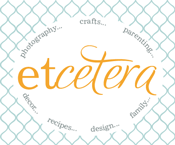
Joe works for the state of Utah maintaining drinking water quality for Utah County and has been asked lots of questions about emergency water filtration and storage. This is a packet of information he put together for an emergency preparedness question-and-answer session.
Have a drink…
…if you don’t you’ll be dead in 72 hours.
…if you don’t you’ll be dead in 72 hours.
Storage
-How much is necessary?
A gallon a day per person is a good amount to store. You can survive on less but it varies greatly from person to person so a gallon a day is a safe bet.
-What containers should be used?
Containers should be food approved. Two liter bottles are a cheap convenient container. Water storage containers can be purchased in many shapes and sizes as well. Outdoor retailers or RV suppliers are good places to look for water containers.
Another consideration is the size of the container. For short term use, two liter bottles or commercially bottled water are good choices. For longer term the choices range from 5 gallon jugs to 55 gallon drums. Drums are large, and inconvenient to store. They are nearly impossible to move full, and taking them somewhere to get water is basically out of the question. For those reasons I think a smaller container is a better choice. 10-15 gallon containers allow you to store a decent volume and are still portable.
-What containers should not be used?
Milk containers should not be used. The plastic in milk jugs is often biodegradable and will not hold up to long term use. Juice containers often leave a taste no matter how much you wash them because the acids from the juice are absorbed by the plastic. Metal containers aren’t a good choice. Even if they are coated, water has a way of finding any seam, scratch etc. and causing rust.
-Where should I store my water?
It should be stored in the dark or in opaque containers as sunlight can promote algae growth. It should be stored where it won’t freeze. If at all possible, it would be nice to store the water (and food) somewhere that it will be easily accessible if your house is damaged. It’s also a good idea to store water where your home won’t be damaged if it leaks.
-How should I treat water that will be stored.
Opinions on this differ. Some say water from your tap needs no further treatment, as it contains a small amount of chlorine. This is true in the short term, but for longer term I would still add some chlorine. 5-8 drops of household bleach (~ 5% chlorine) should be good for storage. Make sure it is plain bleach with no perfumes or additives. Also "reverse osmosis" from the water filtration systems might be clean for immediate use, but the process removes all chlorine from the tap water. Without the chlorine the reverse osmosis water is a breeding ground for algae and bacteria. Regular tap water is the best.
-Extras
Sugars in soda or juice containers can promote bacteria growth, so make sure containers are rinsed very well. Disinfecting containers before use is always a good idea as well. One teaspoon of bleach in one quart of water makes a good disinfectant solution. Water can get a flat taste when stored. This is because dissolved oxygen comes out of solution. The taste can be restored by aerating the water. To accomplish this, a mixer may be used or the water may simply be poured back and forth between two containers a few times.
Filtration / treatment
-Why do I need to filter/treat the water?
To filter out dirt, crud, bears, etc. The reason you get sick when you drink untreated water is that there are often harmful microorganisms in the water. Most of these can be filtered out with readily available water filters. Common pathogenic (disease causing) organisms include: Protozoa such as Giardia and Cryptosporidium, bacteria such as E. Coli, and viruses. These pathogens typically cause gastrointestinal distress with symptoms ranging from diarrhea and vomiting, to death. They are usually only life threatening to children, the elderly, or those with health problems. Healthy people are usually able to weather the illness but dehydration can become a serious issue, and at the very least it can make for a horrible camping trip.
To further motivate you to treat your drinking water, keep in mind that the main source of these contaminants is fecal matter - both human and animal. Remember, you never know who is standing in the river just upstream. That “clean” mountain stream doesn’t look so refreshing anymore does it?
-How do I make water safe to drink?
A combination of filtering and disinfection is generally the best way to make safe drinking water. Cryptosporidium and Giardia are fairly resistant to Chlorine or iodine, so disinfection alone is not a good option. These organisms can live for days in chlorine. Fortunately, filters that are available at most outdoor retailers can easily filter out Cryptosporidium and Giardia.
The minimum filter I would recommend is a 1 micron filter. This will filter out Crypto and Giardia which range in size from 3-7 microns. It will, however leave bacteria and viruses behind. Fortunately, they are very susceptible to disinfection by chlorine or iodine. 1 micron was the old standard, but new filters go as small as 0.2 microns. Since bacteria are greater than 0.45 microns, a high quality filter will take out bacteria as well as Protozoa. All that will be left is viruses. They range from about 0.1-0.2 microns. Emergency type filters can’t remove these but again, they are easily dealt with by disinfection.
Another simple way to supply water in an emergency is by boiling. Bringing water to a boil should be enough to kill pathogens. However, because boiling point varies by altitude, a good rule of thumb is to boil it for five minutes. Boiled water can taste flat because the oxygen in it is gone. You can help the flat taste by aerating the water - pouring it back and forth from 2 containers several times.
Boiling is simple, but has limitations. It requires a large amount of fuel, especially if dealing with large volumes. Also, if chemical contamination is an issue, boiling may concentrate the chemicals and lower the water quality. In other words, if you have gross, stinky water to start with, boiling will make it grosser and stinkier.
In the case of chemical contamination, the best thing to do is find a new water source. Filters generally won’t do much for chemical contamination. Activated carbon may remove the chemicals, but there is not an effective way for most people to test the water to be sure it is safe.
Last, a simple and effective way to make safe drinking water in small volumes is sodis. Sodis (soh-dees) is a nickname which means solar disinfection. This is a fairly new practice that is commonly used by travelers, and is improving living conditions in third-world countries. The technique is simple. Water is put in clear plastic bottles (such as your two liter bottles that you use for water storage) and placed in the sun. The longer it is in the sun and the hotter it is, the more effective the disinfection will be. That's it. Ultraviolet light kills the pathogens and makes the water safe to drink. This will not make it safe for storage, however, as UV has no residual disinfection ability.
-What do I use for disinfection?
The simplest thing to do is buy water purification tablets or drops. They are typically iodine or chlorine based. These are nice, because they are pre-measured, inexpensive, and easy to store or transport. Chlorine bleach is a good option as well. And once again, boiling or UV can disinfect, but will not have the added benefit of a residual disinfectant.
-Extras
Consider your source water: the cleaner the source, the cleaner the finished product. Turbidity (dirtiness of water) has a “masking” effect on disinfectants. You can’t toss an iodine tablet into muddy water and expect it to be drinkable. If you have to use dirty water, pre-filtering is a good idea. You can use cloth for large particles, and something like a coffee filter for smaller particles. Settling is effective as well, if you have time. Disinfectants take time. This is important. The amount of pathogens killed is proportional to the amount of disinfectant and the time they are in contact. Give your tablets time to work
Websites
www.lds.org
www.fema.gov/plan/prepare/water
www.redcross.org/service/prepare
www.sodis.ch/index_EN
www.asapsolution.com














No comments:
Post a Comment